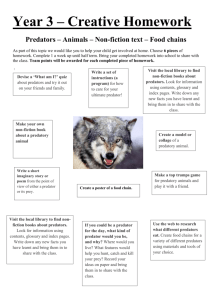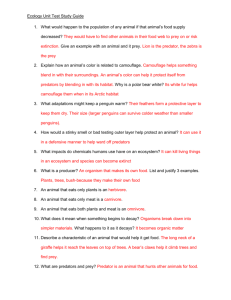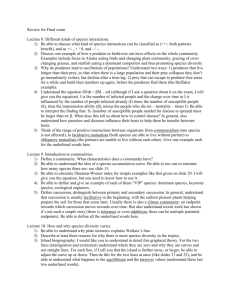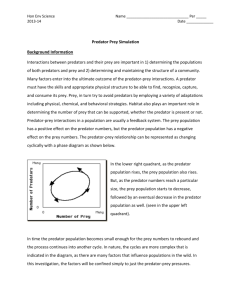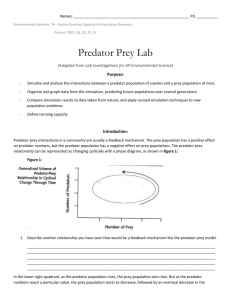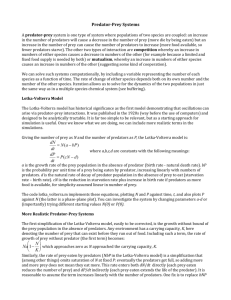Name: Hour: 1 2 3 4 5 6 7 Date: Looney Tunes Predator
advertisement
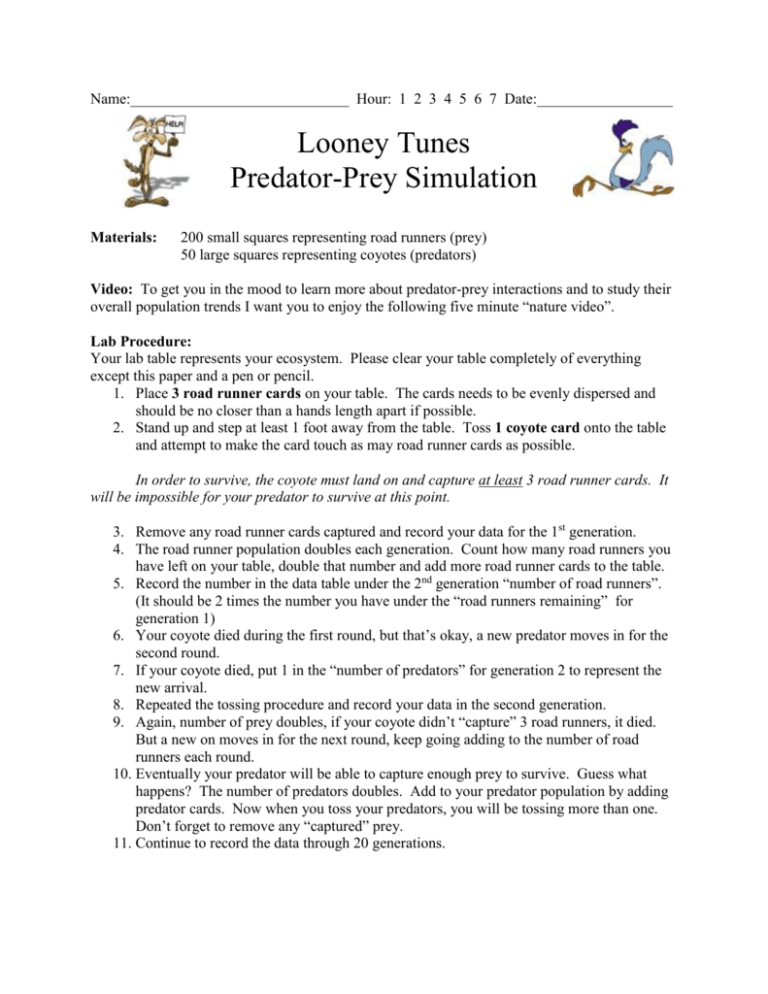
Name:_____________________________ Hour: 1 2 3 4 5 6 7 Date:__________________ Looney Tunes Predator-Prey Simulation Materials: 200 small squares representing road runners (prey) 50 large squares representing coyotes (predators) Video: To get you in the mood to learn more about predator-prey interactions and to study their overall population trends I want you to enjoy the following five minute “nature video”. Lab Procedure: Your lab table represents your ecosystem. Please clear your table completely of everything except this paper and a pen or pencil. 1. Place 3 road runner cards on your table. The cards needs to be evenly dispersed and should be no closer than a hands length apart if possible. 2. Stand up and step at least 1 foot away from the table. Toss 1 coyote card onto the table and attempt to make the card touch as may road runner cards as possible. In order to survive, the coyote must land on and capture at least 3 road runner cards. It will be impossible for your predator to survive at this point. 3. Remove any road runner cards captured and record your data for the 1st generation. 4. The road runner population doubles each generation. Count how many road runners you have left on your table, double that number and add more road runner cards to the table. 5. Record the number in the data table under the 2nd generation “number of road runners”. (It should be 2 times the number you have under the “road runners remaining” for generation 1) 6. Your coyote died during the first round, but that’s okay, a new predator moves in for the second round. 7. If your coyote died, put 1 in the “number of predators” for generation 2 to represent the new arrival. 8. Repeated the tossing procedure and record your data in the second generation. 9. Again, number of prey doubles, if your coyote didn’t “capture” 3 road runners, it died. But a new on moves in for the next round, keep going adding to the number of road runners each round. 10. Eventually your predator will be able to capture enough prey to survive. Guess what happens? The number of predators doubles. Add to your predator population by adding predator cards. Now when you toss your predators, you will be tossing more than one. Don’t forget to remove any “captured” prey. 11. Continue to record the data through 20 generations. Data: Generations 1 2 3 4 5 6 7 8 9 10 11 12 13 14 15 16 17 18 19 20 # of predators # of prey # of predators remaining # of prey remaining Data Analysis: Graph your data. Make a double line graph. On the X-axis, put generations 1 through 20. Why?_________________________ On the Y-axis you will have the population numbers for each generation (number of predators and number of prey). Why?__________________________ Use one line for the predator and one line for the prey to graph the data. I would assign make the predator line one color and prey line a different color. Make sure and title your graph and label both the X axis and the Y axis. Graphing: Additional Questions 1. Describe the relationship between the two variables. (Be detailed) 2. What inferences about the predator-prey relationship can you make based on this data?





